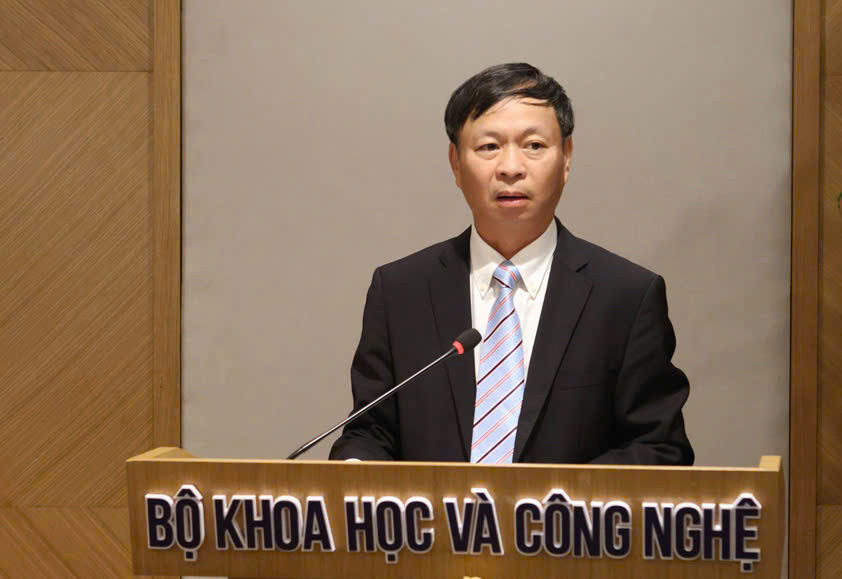
Deputy Minister Hoang Minh speaks at the launch of the Vietnam Science and Technology Exchange. Photo: MH
On June 30, the Ministry of Science and Technology (MOST) officially launched the Vietnam Science and Technology Exchange (S&T Exchange), marking a new chapter in the country’s innovation ecosystem.
The platform is operated under a public-private partnership model in which the government provides infrastructure, an online marketplace, access to science and technology (S&T) databases, and policy support for secure and transparent transactions.
This initiative builds on over a decade of efforts, including 22 provincial technology portals and national-scale tech events such as Techmart, Techconnect and Innovation, and Techfest. These initiatives laid the groundwork for what is now a centralized, integrated S&T exchange system.
Deputy Minister of Science and Technology Hoang Minh emphasized that the S&T Exchange is not just a technical tool but a core institutional pillar to accelerate innovation and transition to a knowledge-based economy. It will serve as an extended hand connecting research, production, and markets.
The Vietnam S&T Exchange is expected to be fully operational by November 2025.
Currently in Phase 1, the platform hosts listings for 600 technologies available for sale (including machinery and equipment), 50 demands for technology acquisition, and 150 registered technology consultants and brokers.

The exchange supports organizations, businesses, and individuals in showcasing and selling their technology offerings through dedicated virtual booths.
To develop Phase 2, relevant agencies are expected to implement features such as online demand-supply matching, consulting and brokerage services, transaction tracking and analytics, and advisory tools on financing, intellectual property, and technology transfer.
Future plans also involve integrating and expanding access to national science, technology, and innovation databases, combining both online and in-person exchanges.
Since the 1990s, similar models have flourished in the U.S., Europe, and China. These exchanges are more than marketplaces - they provide essential services such as valuation, legal and financial advice, quality certification, and IP protection.
A leading example in Asia is the Shanghai Technology Exchange (STEX), launched in 1993. Initially a small-scale brokerage center, STEX has become the nucleus of Shanghai’s innovation ecosystem. By 2023, it had recorded more than 4,000 tech transactions with a total value of approximately $60 billion.
The STEX model demonstrates how technology exchanges can transform technology into a transparent, measurable, and transferable commodity, playing a critical role in national innovation systems.
Thai Khang